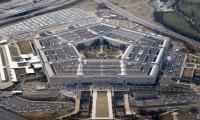This past weekend, the International Institute for Strategic Studies (IISS) hosted the Shangri La Dialogue – the Asia security summit it hosts in Singapore each year and has been doing so for two decades.
As the first in-person event for many people invested in strategic affairs since the Covid-19 pandemic began, there was much anticipation for Shangri La 2022 – not least because both US Secretary of Defence Lloyd Austin and China’s Minister for Defence and State Councilor General Wei Fenghe were scheduled to speak at the event. With both countries eyeball to eyeball in the ‘Indo Pacific’, the bilateral meeting between the two, as well as the stand-alone sessions they addressed on day one and day two of the Shangri La Dialogue were highly anticipated. With a focus on the Indo-Pacific and Southeast Asia, the event felt like it was yet another missed opportunity for the South and Central Asia regions (neither Pakistan nor India sent official delegations). Nevertheless, the event offered a glimpse of the future for the eight plus countries of the Central Asia region and the seven plus countries of the South Asia region.
The Indo Pacific theatre will inform the strategic space for Azerbaijan, Turkmenistan, Uzbekistan, Kazakhstan, Kyrgyzstan, Tajikistan, Afghanistan, Pakistan, India, Nepal, Bangladesh, Bhutan, Sri Lanka, and the Maldives for some time to come. At Shangri La, brilliantly curated by the scholars and public intellectuals that work at IISS, there was some very bad news for the South and Central Asia regions, and some pretty good news too. First the bad news.
The bad news is that the West, and especially the Donald Trump administration in the United States, have successfully shaped the region in the image of the China-US competition that the strategic community in Western capitals has sought for several years. This is not to suggest that China does not share responsibility for ramping up tensions in the South China Sea, or across the various legitimate spheres of influence for US power in the Pacific Ocean (and partly the Indian Ocean too). But the primary loser in a strategic competition between China and the US, to begin with at least, would seem to be China. Beijing’s expectations of a zero-problems expansion of political, military and economic power in its immediate region were always going to be met with serious bilateral and regional challenges. But the keenness of the US to underwrite those challenges, almost right across the board, forces China to be distracted from the principal and primary purpose of China’s engagement with the rest of the world: trade, commerce and the continued growth of China’s economic miracle.
Despite explicitly committing itself to the One China Policy, and clearly denying any intention of recognizing or supporting Taiwan independence, Lloyd Austin spoke about American intent to support the island’s “self-defense”. He also spoke at length about the need to protect the right of way and freedom of movement, in and around the East China and South China seas, and the continued American commitment to its treaty allies in the region, including Australia, Japan, South Korea, Thailand, and the Philippines. The Pentagon boss also directly addressed the trepidation in Beijing and in other capitals, of an “Asian Nato”, denying that Washington seeks such a framework. The thrust of his speech was that the Indo-Pacific region was the fulcrum of American grand strategy, and that no region was as consequential to US strategy as the Indo Pacific.
General Wei of China picked up right where the US SecDef left off, specifically objecting to the centrality of the Indo Pacific region in American calculations. He noted that the implicit purpose of even the framing of the “Indo-Pacific” term is the containment of China (this objection to ‘Indo-Pacific’ is something strategists share in both Moscow and in Beijing, with Russian Foreign Minister Sergei Lavrov having objected to it, even in conversations with Russia’s long-time partner, and greatest strategic beneficiary of the term: New Delhi). General Wei also spoke at length about Taiwan and the South China Sea, underscoring Beijing’s zero tolerance for external interference on the Taiwan issue, and highlighting the fact that freedom of navigation in the South China Sea is a core interest for China because it is the primary beneficiary of such freedom – yet another nod to the centrality of trade and commerce to China.
I was surprised by how open and frank General Wei seemed willing to be on this issue of trade and commerce. He clearly expressed China’s dismay at decoupling, which is seen largely as a Western effort to disaggregate and disentangle supply chains from their very significant pre pandemic dependence on China. “We do not bully others, but we will not be bullied either,” he said, as part of a repeated theme of his effort to respond to the similarly clear eyed and resolute intent expressed by Secretary Austin.
The China-US competition in the Indo-Pacific region is bad news for Pakistan and the wider Central and South Asia regions that Pakistan serves as the center of gravity for. It means that the effort to balance between Islamabad’s close friendship with Beijing and its floundering, but cyclical alliance with the US will require much more sophistication, adaptability and nimbleness than what the combined powers of Rawalpindi and Islamabad seem capable of at this time.
The growing criticality of the ‘Indo-Pacific’ region also means that even with a clear-as-day slow-burn genocide being organized and executed against minorities in India, New Delhi will be the principal pivot through which Washington DC, Canberra and Tokyo will articulate and organize their joint efforts to thwart and contain China’s increasingly muscular efforts to resist US hegemony in the Indian Ocean and the Pacific Ocean.
Can Pakistan be a source of strategic stability for the people and countries of Central Asia whilst it faces internal strife, economic dysfunction and the stormy waters of the Indo-Pacific? It seems difficult but is not impossible. I recommend to those interested in the topic to read Ejaz Haider’s recent paper on how Pakistan should treat the Indo-Pacific, the Quad and AUKUS (full disclosure: he wrote this paper for Tabadlab, the firm I work for and am a partner at).
But there was a silver lining at Shangri La for those that worry about how challenging great power competition can be and whether smaller countries are only destined to suffocate and choke under the pressure of such competition. In July 2012, just as Pakistan had received a long-awaited apology from then US secretary of state Hillary Clinton, for the Salala attack in which US/Nato/ISAF gunships engaged and martyred 24 Pakistani soldiers in November 2011, an Asean Summit ended for the first time without a joint statement. Asean of course is the regional alliance that began in 1967 with Thailand, Indonesia, the Philippines, Malaysia and Singapore and has since grown to include Laos, Cambodia, Myanmar, Vietnam and Brunei. The economic trajectory of the Asean countries has been almost overwhelmingly positive, in part because of the clear regional vision that these countries decided to invest in.
In 2012, the contention that caused a first-time absence of consensus was the South China Sea. Since then, every one of the ten Asean countries has registered economic growth – even those at the lower end of the performance chart. So too has China. And so too have the US and India. In fact, the only two countries in the wider Asean–Indo-Pacific theater that have not grown very much since 2012 are Australia and Japan. Demographics can be a cruel liability.
The good news in all this is that strategic competition, and even proactive contestation is not the reason why countries struggle to grow. Pakistan is right to worry about Afghanistan, right to defend itself against India, and even right to be concerned about the direction of Iran and the impact of China. Can Pakistan ever escape being a national security state? Probably not. But having national security complexities is no excuse for curating an utterly dysfunctional economy.
The good news is that Pakistan is not unique. East Asian or ‘Indo-Pacific’ nations have suffered the same challenges – almost all of them are national security states, almost all of them have territorial disputes, almost all of them were once colonized, almost all of them have dealt with terrorist insurgencies and separatism, and almost all of them are under pressure because of the China-US competition – just like Pakistan.
Pakistan is only unique in being incapable of sustaining economic growth. This is not because of the outside world. Nor because of any conspiracy. That’s good news because it puts the onus for change on Pakistanis. Blaming the outside world is weak and pathetic, and it serves only Pakistan’s enemies.
The writer is an analyst and commentator.
According to Chanakya, secret of strong nation lies in ability to protect its citizens
Rapid economic progress was made possible under Modi's leadership if not ‘Modi's guarantee’
Pakistan was considered water-abundant country, with per capita water availability being 5650 cubic meters in 1951
Shrine of Mian Mir.—TheNews/FileMy history professor once referred to a theory that says the developmental telos of...
If Pakistan does not take prompt and decisive action, it could find itself at forefront of world's first water conflict
Please note that dam survey team from World Bank had proposed building of this dam in 1955







